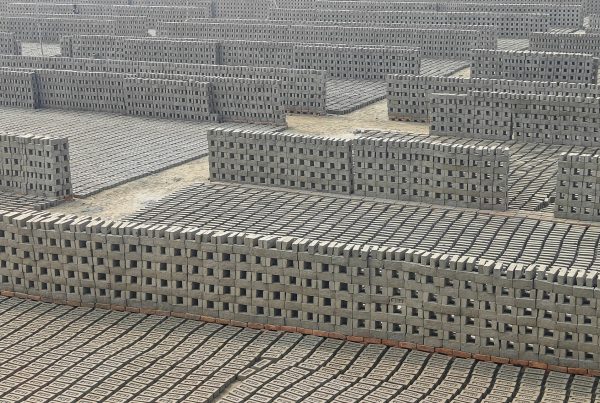Concrete is one of the most environmentally sapping industries on the planet. The building sector has been attempting for years to decarbonize, which has led to an exciting innovation. Paris, France, is home to the world’s first building made from 100% recycled materials, including all the concrete used. How will this influence infrastructure and its workers for a more eco-friendly future?
Specs on the First 100% Recycled Concrete Building
Several 60-year-old apartment buildings were recently demolished in an area outside of Paris. It was replaced by a 220-unit complex called Recygénie, which comprised seven buildings. Swiss research and development company Holcim chose to repurpose the debris and leverage recycled components. They partnered with French housing development company Seqens to finalize the project.
Recygénie’s success is due to Holcim’s proprietary ECOCycle technology, which aims to normalize accessible construction recycling. This technology created the circular concrete buildings that are making headlines and reshaping the engineering and construction industries. The concept quickly garnered publicity, earning it a winning spot in Fast Company’s 2024 World Changing Ideas Awards for saving 6,000 tons of new resources.
The companies added to the construction waste to make it more robust and reliable. These inclusions are almost as revolutionary as recycled concrete, as other materials in the construction industry face environmental criticisms and scarcity. Builders supplemented the concrete rubble with other recycled ingredients, including:
- Sand
- Steel slag
- Cement
- Water
- Paper byproducts
Residents will begin moving in around the fall of 2024. Long-term building performance and inhabitant testimonies will be critical for promoting similar circular projects to break ground worldwide.
Implications for Builders and Engineers
Holcim faced several hurdles in erecting these recycled buildings. First, they had to battle government standards. France limits the amount of recycled products in buildings because organizations fear they compromise structural integrity. The regulations exist to ensure building quality, yet they prevent progress toward a circular economy and promote inaccurate assumptions about the sturdiness of recycled parts.
The ideas may hinder retrofits and repairs as well, primarily when projects want high-quality, recycled materials to extend the life and reduce costs for fixing damaged roofs or siding. Not all building components degrade at the same rate after recycling processes, and this project sought to revise these mindsets. Builders and engineers witnessed a company overcoming regulations to support sustainable ideals, which is a massive leap forward in sector-wide shifts.
Holcim deployed a monitoring initiative in collaboration with the Scientific and Technical Centre for Building, a national French organization that oversees R&D in the industry. The reporting demonstrated how private companies are responsible for influencing regulatory action and policy change to require regenerative materials in construction. As legislative changes occur, builders and engineers will shift to sustainable techniques until recyclable concrete becomes standard.
Agencies may encourage more antiquated yet eco-friendly methods, like earthen blocks or straw, to improve climate resilience and weatherization potential. Concrete also provides these benefits, with high fire resistance and insulation properties giving it its reputation. Keeping it an industry mainstay will force corporations to use recycled options or environmentally friendly supplements to make green buildings.
Challenges to Overcome
Not all demolition projects will result in enough materials to fashion a new structure. If there is not enough waste, organizations must incorporate other eco-conscious facets to make it sustainable.
R&D is still finding the best contenders in a market fighting over the validity of products like mass timber, geopolymers and more. Businesses may only be willing to shift to sourcing ethical resources immediately if demolition is lucrative enough.
Construction experts are encountering more changes in their sector than others. Rapid urbanization, decarbonization and digitization require professionals to adapt to new standards, technologies and mentalities frequently. Asking corporations to weigh these priorities equally is complicated, often boiling down to how straightforward it is to achieve compliance and how affordable it is to hit project deadlines.
Buildings and construction account for 37% of global emissions and a significant portion of this is embodied carbon. Numerous advancements attempt to lower a building’s carbon footprint after construction, but less effort goes toward making design, resource extraction and installation more eco-friendly.
The only way to enforce consistent efforts is with ethical, accessible laws. One of the most significant barriers against sustainable construction is social factors like poor communication and conflicting interests between contractors, designers and stakeholders. This will help clarify environmental, social and governance goals for construction and engineering firms regardless of country.
The Future of Circular Buildings
Recygénie’s impact will inspire countless recycled projects in the future. Its positive mark will motivate construction companies to shift to eco-friendly operations to get a chance at the spotlight. Construction must head in a circular direction, repurposing as many existing materials as possible to prevent environmental destruction and greenhouse gas emissions. If construction agencies do so, they will slash embodied carbon to make infrastructure more sustainable.











